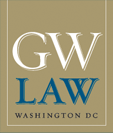Document Type
Article
Publication Date
2008
Status
Accepted
Abstract
Sovereignty has long been the dominant lens through which we view both federalism and international law. From the perspective of sovereignty, both federalism and international law are primarily about drawing clear boundaries and demarcations between separate, autonomous power centers. Recently, however, a group of scholars have embraced a more pluralist approach to both American federalism and international law. They have touted the important virtues of jurisdictional redundancy and inter-systemic governance models in which multiple legal and regulatory authorities weigh in regarding the same acts and actors. And they argue that such jurisdictional redundancies are not just a necessary accommodation to the reality of a world of multiple authority; they may actually be beneficial. Such benefits include a greater possibility for error correction, a more robust field for norm articulation, and a larger space for creative innovation. Moreover, we might think that when decisionmakers are forced to consider the existence of other possible decisionmakers they will tend to adopt, over time, a more restrained view of their own power, seeing themselves as part of a larger tapestry of decisionmaking in which they are not the only potentially relevant voice. Indeed, pluralists recognize that what constitutes the appropriate spheres for “local,” “national,” and “international” regulation and adjudication changes over time and should not be essentialized.
To illustrate how a pluralist approach might work, I discuss Medellín v. Texas, in which the United States Supreme Court intervened in a dispute among the International Court of Justice, the Bush administration, and the State of Texas regarding the appropriate role of the Vienna Convention on Consular Relations in a state capital murder case. Although the Supreme Court majority emphasized the need to delineate clear, non-overlapping spheres of international, national, and state authority, I draw on the insights of legal pluralism to proffer a more flexible approach to the interaction of multiple sources of law implicated by the case.
SSRN Link
http://ssrn.com/abstract=1409292
Recommended Citation
73 Mo. L. Rev. 1151 (2008)
